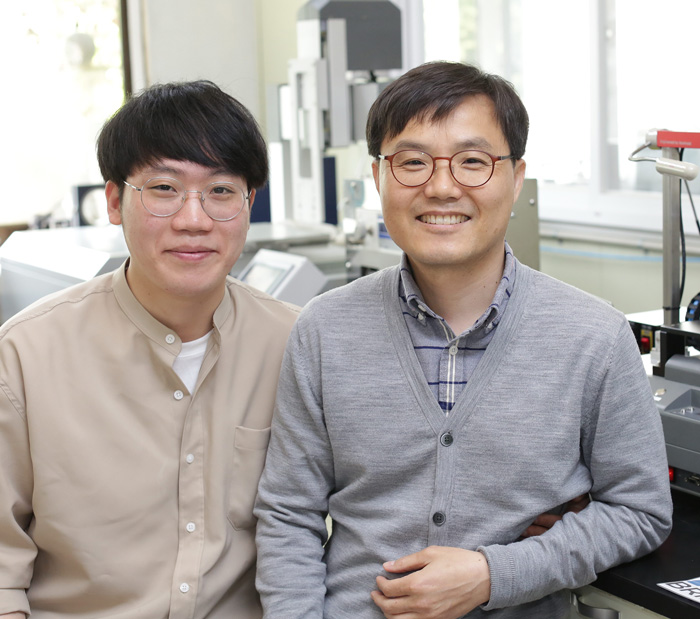Research Stories
Research on Fabrication of Biomimetic Microfibril Structures using 3D Printing
The team (first author: Won Jin KIM) led by Geun Hyung KIM (Department of Biomechatronics Engineering at Sungkyunkwan University) fabricated a structure composed of bundled poly (e-caprolactone) (PCL) microfibers coated with collagen.
Bio-Mechatronic Engineering
Prof.
KIM, GEUNHYUNG
In the human body, microfibril structures can be found in several types of tissue, such as muscles, nerves, and even tendons. In particular, muscle tissues have uniaxially-aligned microfibrous structures.
The team (first author: Won Jin KIM) led by Geun Hyung KIM (Department of Biomechatronics Engineering at Sungkyunkwan University) fabricated a structure composed of bundled poly (e-caprolactone) (PCL) microfibers coated with collagen. To obtain the bundle of uniaxially-aligned (PCL) microfibers, 4D printing methods using a poly (vinyl alcohol) (PVA) fibrillation/leaching process were used. PVA was dissolved in distilled water to fibrillate the PVA. Then, PCL was added to the PVA solution and mixed. After mixing, the PVA/PCL mixture was printed using a 3D printer. The fabricated 3D structure was immersed in water to leach the fibrillated PVA. By using this simple fabricating method, a uniaxially micropatterned/fibrous PCL bundle was achieved. The fabricated structure was supplemented with collagen to increase the biocompatibility of the PCL bundle. The hybrid microfibrillated structure promoted myoblast proliferation and myogenic differentiation.
“Due to the 4D printing process, it was able to have high efficiency in the fabrication of 3D scaffolds with highly aligned microfibrous bundles. In addition, a variety of designs and complex microscale-patterned 3D structures were constructed because of a highly versatile 3D printing method,” Prof. KIM said.
Published article:
W. Kim, M. Kim, G. H. Kim, Adv. Funct. Mater. 2018, 1800405.
Article link: https://onlinelibrary.wiley.com/doi/epdf/10.1002/adfm.201800405

